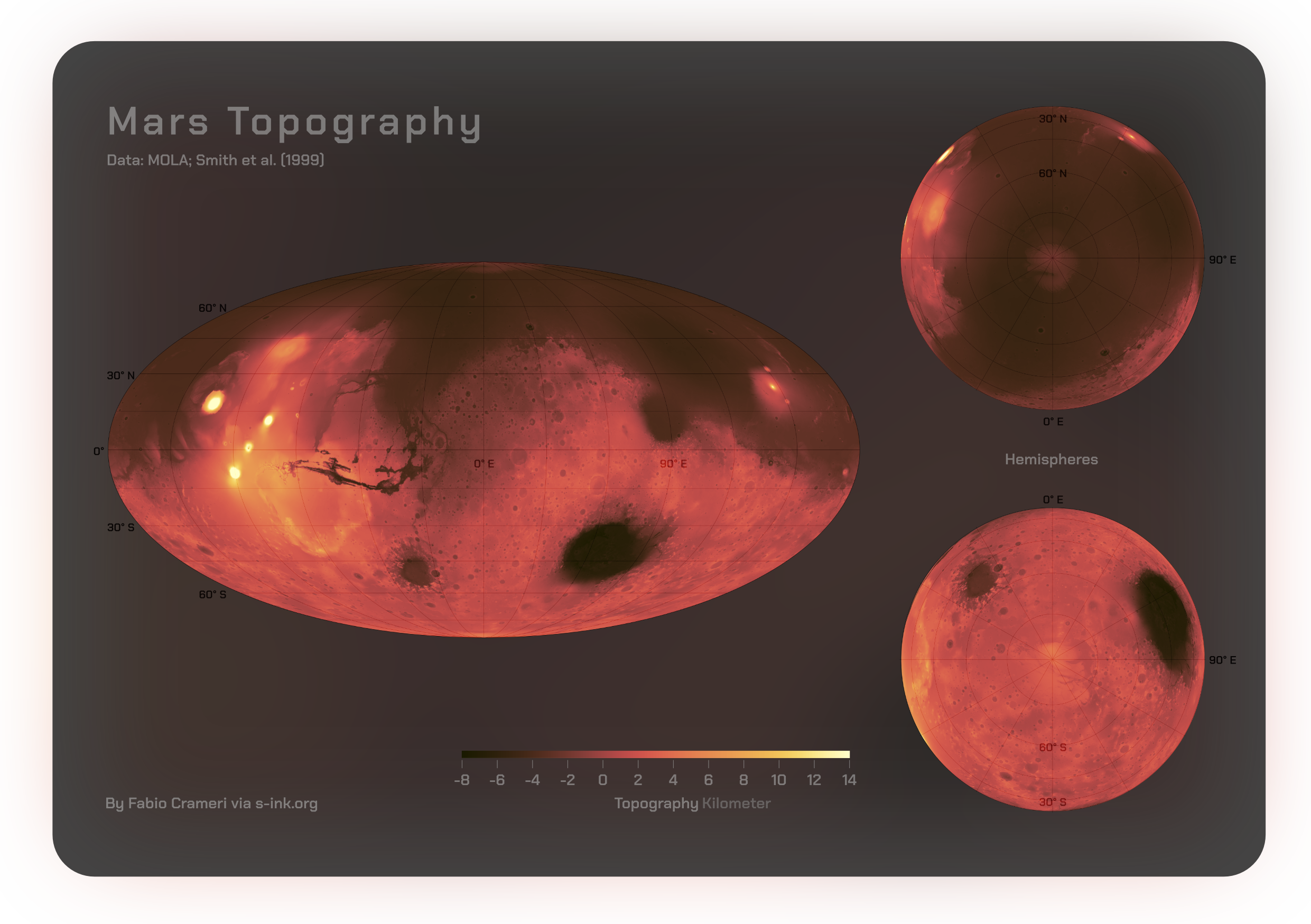|
Susan Murabana
Susan Murabana Owen is a Kenyan astronomer. The co-founder of Travelling Telescope, she is known for her efforts to promote science, technology, engineering and mathematics in Africa, particularly among girls. Early life and education Murabana grew up in Nairobi, Kenya, and studied sociology and economics at the city's Catholic University of Eastern Africa. In 2011, she graduated with a master's degree in astronomy from James Cook University in Australia, having studied online. Murabana has cited African American astronaut Mae Jemison and Kenyan environmentalist Wangari Maathai as her heroes. Astronomy career Voluntary work Murabana first became interested in space when she was in her twenties, when her uncle invited her to attend a science outreach programme in Mumias, Kakamega County, facilitated by Cosmos Education. She subsequently became a volunteer for the organisation, and later went on to work with the International Astronomical Union's Global Hands-on Universe pro ... [...More Info...] [...Related Items...] OR: [Wikipedia] [Google] [Baidu] |
Science, Technology, Engineering, And Mathematics
Science, technology, engineering, and mathematics (STEM) is an umbrella term used to group together the distinct but related technical disciplines of science, technology, engineering, and mathematics. The term is typically used in the context of education policy or curriculum choices in schools. It has implications for workforce development, national security concerns (as a shortage of STEM-educated citizens can reduce effectiveness in this area), and immigration policy, with regard to admitting foreign students and tech workers. There is no universal agreement on which disciplines are included in STEM; in particular, whether or not the ''science'' in STEM includes social sciences, such as psychology, sociology, economics, and political science. In the United States, these are typically included by the National Science Foundation (NSF), the Department of Labor's O*Net online database for job seekers, and the Department of Homeland Security. In the United Kingdom, the social scien ... [...More Info...] [...Related Items...] OR: [Wikipedia] [Google] [Baidu] |
National Geographic
''National Geographic'' (formerly ''The National Geographic Magazine'', sometimes branded as ''Nat Geo'') is an American monthly magazine published by National Geographic Partners. The magazine was founded in 1888 as a scholarly journal, nine months after the establishment of the society, but is now a popular magazine. In 1905, it began including pictures, a style for which it became well known. Its first color photos appeared in the 1910s. During the Cold War, the magazine committed itself to present a balanced view of the physical and human geography of countries beyond the Iron Curtain. Later, the magazine became outspoken on environmental issues. Until 2015, the magazine was completely owned and managed by the National Geographic Society. Since 2015, controlling interest has been held by National Geographic Partners. Topics of features generally concern geography, history, nature, science, and world culture. The magazine is well known for its distinctive appearance: a ... [...More Info...] [...Related Items...] OR: [Wikipedia] [Google] [Baidu] |
Orion Nebula
The Orion Nebula (also known as Messier 42, M42, or NGC 1976) is a diffuse nebula in the Milky Way situated south of Orion's Belt in the Orion (constellation), constellation of Orion, and is known as the middle "star" in the "sword" of Orion. It is one of the brightest nebulae and is visible to the naked eye in the night sky with an apparent magnitude of 4.0. It is away and is the closest region of massive star formation to Earth. M42 is estimated to be 25 light-years across (so its apparent size from Earth is approximately 1 degree). It has a mass of about 2,000 times that of the Sun. Older texts frequently refer to the Orion Nebula as the Great Nebula in Orion or the Great Orion Nebula. The Orion Nebula is one of the most scrutinized and photographed objects in the night sky and is among the most intensely studied celestial features.Press release,Astronomers Spot The Great Orion Nebula's Successor", Harvard-Smithsonian Center for Astrophysics, 2006. The nebula has ... [...More Info...] [...Related Items...] OR: [Wikipedia] [Google] [Baidu] |
Venus
Venus is the second planet from the Sun. It is often called Earth's "twin" or "sister" planet for having almost the same size and mass, and the closest orbit to Earth's. While both are rocky planets, Venus has an atmosphere much thicker and denser than Earth and any other rocky body in the Solar System. Its atmosphere is composed of mostly carbon dioxide (), with a global sulfuric acid cloud cover and no liquid water. At the mean surface level the atmosphere reaches a temperature of and a pressure 92 times greater than Earth's at sea level, turning the lowest layer of the atmosphere into a supercritical fluid. Venus is the third brightest object in Earth's sky, after the Moon and the Sun, and, like Mercury, appears always relatively close to the Sun, either as a "morning star" or an "evening star", resulting from orbiting closer ( inferior) to the Sun than Earth. The orbits of Venus and Earth make the two planets approach each other in synodic periods of 1.6 years ... [...More Info...] [...Related Items...] OR: [Wikipedia] [Google] [Baidu] |
Saturn
Saturn is the sixth planet from the Sun and the second largest in the Solar System, after Jupiter. It is a gas giant, with an average radius of about 9 times that of Earth. It has an eighth the average density of Earth, but is over 95 times more massive. Even though Saturn is almost as big as Jupiter, Saturn has less than a third its mass. Saturn orbits the Sun at a distance of , with an orbital period of 29.45 years. Saturn's interior is thought to be composed of a rocky core, surrounded by a deep layer of metallic hydrogen, an intermediate layer of liquid hydrogen and liquid helium, and an outer layer of gas. Saturn has a pale yellow hue, due to ammonia crystals in its upper atmosphere. An electrical current in the metallic hydrogen layer is thought to give rise to Saturn's planetary magnetic field, which is weaker than Earth's, but has a magnetic moment 580 times that of Earth because of Saturn's greater size. Saturn's magnetic field strength is about a twen ... [...More Info...] [...Related Items...] OR: [Wikipedia] [Google] [Baidu] |
Mars
Mars is the fourth planet from the Sun. It is also known as the "Red Planet", because of its orange-red appearance. Mars is a desert-like rocky planet with a tenuous carbon dioxide () atmosphere. At the average surface level the atmospheric pressure is a few thousandths of Earth's, atmospheric temperature ranges from and cosmic radiation is high. Mars retains some water, in the ground as well as thinly in the atmosphere, forming cirrus clouds, frost, larger polar regions of permafrost and ice caps (with seasonal snow), but no liquid surface water. Its surface gravity is roughly a third of Earth's or double that of the Moon. It is half as wide as Earth or twice the Moon, with a diameter of , and has a surface area the size of all the dry land of Earth. Fine dust is prevalent across the surface and the atmosphere, being picked up and spread at the low Martian gravity even by the weak wind of the tenuous atmosphere. The terrain of Mars roughly follows a north-south ... [...More Info...] [...Related Items...] OR: [Wikipedia] [Google] [Baidu] |
Jupiter
Jupiter is the fifth planet from the Sun and the List of Solar System objects by size, largest in the Solar System. It is a gas giant with a Jupiter mass, mass more than 2.5 times that of all the other planets in the Solar System combined and slightly less than one-thousandth the mass of the Sun. Its diameter is 11 times that of Earth and a tenth that of the Sun. Jupiter orbits the Sun at a distance of , with an orbital period of . It is the List of brightest natural objects in the sky, third-brightest natural object in the Earth's night sky, after the Moon and Venus, and has been observed since prehistoric times. Its name derives from that of Jupiter (god), Jupiter, the chief deity of ancient Roman religion. Jupiter was the first of the Sun's planets to form, and its inward migration during the primordial phase of the Solar System affected much of the formation history of the other planets. Jupiter's atmosphere consists of 76% hydrogen and 24% helium by mass, with a denser ... [...More Info...] [...Related Items...] OR: [Wikipedia] [Google] [Baidu] |
Planet
A planet is a large, Hydrostatic equilibrium, rounded Astronomical object, astronomical body that is generally required to be in orbit around a star, stellar remnant, or brown dwarf, and is not one itself. The Solar System has eight planets by the most restrictive definition of the term: the terrestrial planets Mercury (planet), Mercury, Venus, Earth, and Mars, and the giant planets Jupiter, Saturn, Uranus, and Neptune. The best available theory of planet formation is the nebular hypothesis, which posits that an interstellar cloud collapses out of a nebula to create a young protostar orbited by a protoplanetary disk. Planets grow in this disk by the gradual accumulation of material driven by gravity, a process called accretion (astrophysics), accretion. The word ''planet'' comes from the Greek () . In Classical antiquity, antiquity, this word referred to the Sun, Moon, and five points of light visible to the naked eye that moved across the background of the stars—namely, Me ... [...More Info...] [...Related Items...] OR: [Wikipedia] [Google] [Baidu] |
Sky-Watcher
Sky-Watcher is a commercial distribution company established in 1999 by the Synta Technology Corporation of Taiwan (Synta Taiwan). It markets telescopes and astronomy equipment, such as mounts and eyepieces, aimed at the amateur astronomy market. The products are manufactured at Synta Taiwan's Suzhou Synta Optical Technology Co., Ltd. in Suzhou (Jiangsu), China. The brand is distributed in Canada, Europe and in the late 2000s, it was extended to the United States market. Company history In 1999, the Sky-Watcher brand was established to sell Synta Taiwan's optics, with head offices in Richmond, British Columbia, Canada. They began producing Dobsonian telescopes in 2000, followed by Maksutov–Cassegrains in 2001, and Apochromat ED-APO refracting telescopes in 2004. Sky-Watcher sells telescopes from 2" (50mm) up to 20" (508mm) aperture In optics, the aperture of an optical system (including a system consisting of a single lens) is the hole or opening that primaril ... [...More Info...] [...Related Items...] OR: [Wikipedia] [Google] [Baidu] |
The Christian Science Monitor
''The Christian Science Monitor'' (''CSM''), commonly known as ''The Monitor'', is a nonprofit news organization that publishes daily articles both in Electronic publishing, electronic format and a weekly print edition. It was founded in 1908 as a daily newspaper by Mary Baker Eddy, founder of the new religious movement Christian Science, Church of Christ, Scientist. Since its founding, the newspaper has been based in Boston. Over its existence, seven ''Monitor'' journalists have been awarded the Pulitzer Prize, including Edmund Stevens (1950), John Hughes (editor), John Hughes (1968), Howard James (1968), Robert Cahn (1969), Richard Strout (1978), David S. Rohde (1996), and Clay Bennett (cartoonist), Clay Bennett (2002)."Pulitzer Prizes" at ''The Christian Science Monitor'' official website H ...
|
Perseids
The Perseids are a prolific meteor shower associated with the comet Swift–Tuttle that are usually visible from mid-July to late-August. The meteoroid, meteors are called the Perseids because they appear from the general direction of the constellation Perseus (constellation), Perseus and in more modern times have a radiant (meteor shower), radiant bordering on Cassiopeia (constellation), Cassiopeia and Camelopardalis. Etymology The name is derived from the word Perseids (mythology), Perseids (), the sons of Perseus in Greek mythology. Characteristics The stream of debris is called the Perseid cloud and stretches along the orbit of the comet Swift–Tuttle. The cloud consists of particles ejected by the comet as it travels on its 133-year orbit. Most of the particles have been part of the cloud for around a thousand years. However, there is also a relatively young filament of dust in the stream that was pulled off the comet in 1865, which can give an early mini-peak the da ... [...More Info...] [...Related Items...] OR: [Wikipedia] [Google] [Baidu] |










